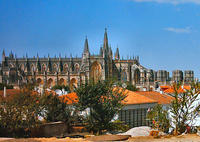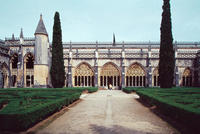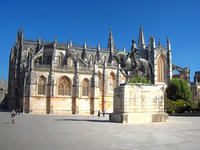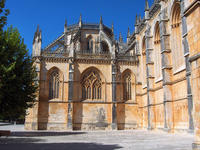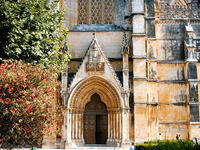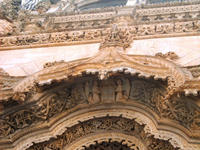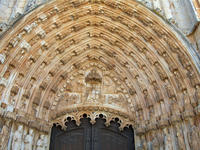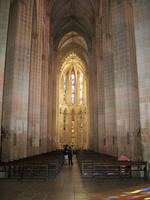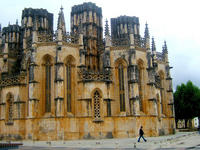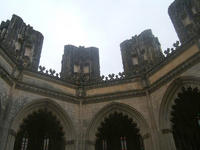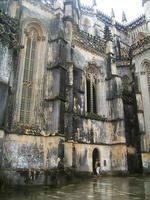You are in: Europe -> Portugal -> Monastery of Batalha, and traditional search or Image Gallery will yield results of this site only
Monastery of Batalha
| Site number: | 264 |
|
| Type of site: | Cultural | |
| Date: | 14-16th century | |
| Date of Inscription: | 1983 | |
| Location: | Europe, Portugal, Batalha (Leiria) | |
Up to 75 images are shown here. Click on each for more details or on Image Gallery for more images.
| Description: | The Monastery of the Dominicans of Batalha was erected to celebrate the triumph over the Castilians by the Portuguese at the battle of Aljubarrota in 1385. For the next two centuries it constituted the Portuguese monarchy's main building project. Greatly influenced by Manueline art, a highly original, national Gothic style evolved as exemplified by its masterpiece, the Royal Cloister. --WHMNet paraphrase from the description at WHC Site, where additional information is available. | |
| Santa Maria da Vitória na Batalha, more commonly known as the Batalha Monastery, is a Dominican monastery in the Portuguese town of Batalha, in the District of Leiria, Portugal. It is one of the best and original examples of Late Gothic architecture in Portugal, intermingled with the Manueline style. It amazes the onlooker with its profusion of gables, spires, pinnacles and buttresses. It has become a symbol of national pride. The monastery was built to thank the Virgin Mary for the Portuguese victory over the Castilians in the battle of Aljubarrota in 1385, fulfilling a promise of King D. João I. The battle put an end to the 1383-1385 crisis. The monastery took two centuries to build, starting in 1386 and ending circa 1517, spanning the reign of seven kings. It took the efforts of fifteen architects (Mestre das Obras da Batalha), but for seven of them the title was no more than a honorary title bestowed on them. The construction required an enormous effort, using extraordinary resources of men and material. New techniques and artistic styles, hitherto unknown in Portugal, were deployed. In 1840 king Ferdinand II of Portugal started a restoration program of the abandoned monastery in ruins, saving this jewel of Gothic architecture. The restoration would last till the early years of the 20th century. It was declared a national monument in 1907. In 1980 the monastery was turned into a museum. The Batalha Abbey was added in 1983 by the UNESCO to its list of World Heritage sites. The monastery stands up from all the village, and although some dislike the implantation of new hotels by its side, they can always enjoy the interesting homes of the 18th century, the "guillotine" windows and the magnificent Manueline portal of the main church. It is among one of the most fascinating pieces of Gothic and Manueline architecture within the country. --Wikipedia. Text is available under the Creative Commons Attribution-ShareAlike License. | ||
| Source: | http://whc.unesco.org/en/list/264 | |
| Reference: | 1. UNESCO World Heritage Center, Site Page. | |


